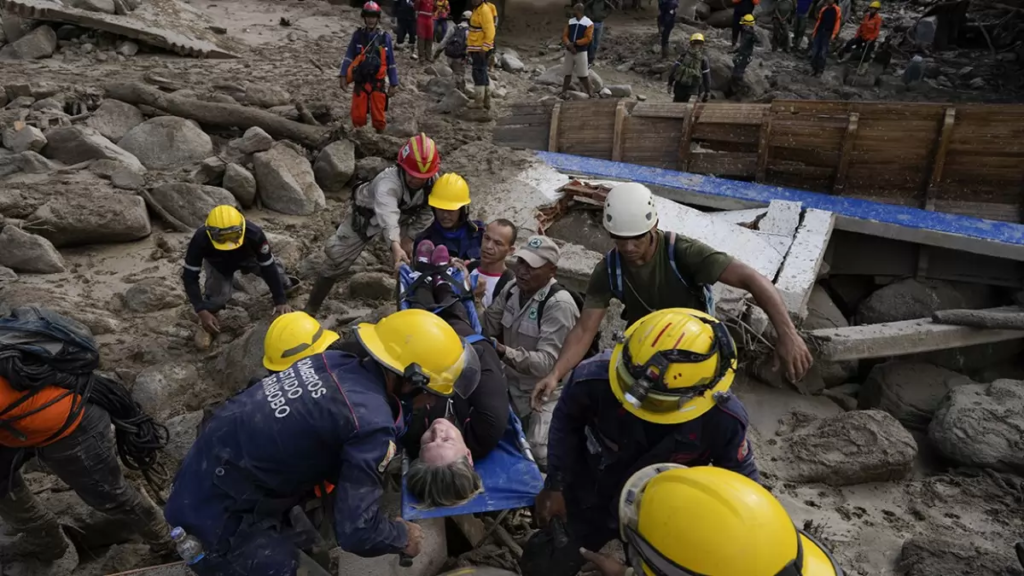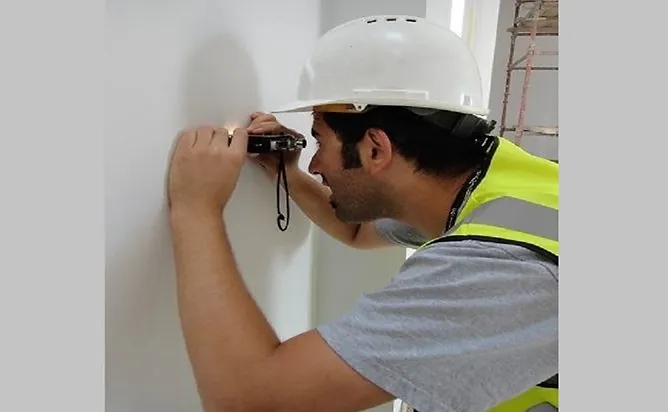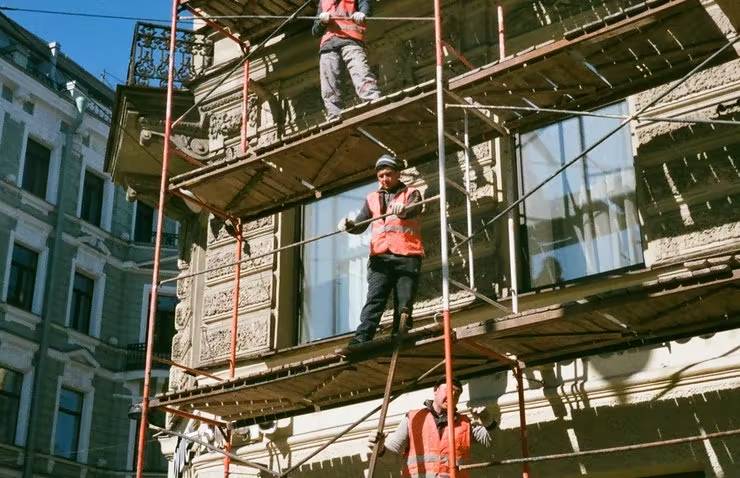Khalasi (Assistant Rigger) (6 month course)
Khalasi (Assistant Rigger) click here
Brief Job Description
The job role is responsible for shifting, preparing surface of heavy structural steel/ RCC precast units,
laying concrete pump lines, assisting in erection of staging for heavy RCC structures and pile foundation
works by using appropriate rigging gears, hand tools and PPEs at construction or erection site

Personal Attributes
The individual is expected to be physically fit and should be able to work across various locations in
extreme weather/site conditions. The job holder should preferably be physically sound, free from vertigo
problem, cardiovascular diseases as the nature of work involves handling heavy loads and sometimes
working at height
Shift RCC Precast / Structural Steel units at construction site
Description
This unit describes the skills and knowledge required to shift RCC Precast / Structural Steel units at
construction site.
Scope
The scope covers the following :
Select and use appropriate rigging gears, hand tools and PPEs
Carry out preparatory work prior to lifting operations
Shift RCC precast units or steel components as per instructions
Elements and Performance Criteria
Select and use appropriate rigging gears, hand tools and PPEs
To be competent, the user/individual on the job must be able to:
PC1. identify and select appropriate rigging gears required for heavy material lifting and shifting
works at construction site
PC2. isolate faulty rigging gears and store them separately as per instruction
PC3. select appropriate hand tools to be used for heavy material rigging works
PC4. select and use appropriate peps for lifting operations
Carry out preparatory work prior to lifting operations

To be competent, the user/individual on the job must be able to:
PC5. carry out checks to the rigging gears and hand tools for its usability during and prior to
material lifting and shifting work
PC6. remove obstructions (if any) from equipment movement route as per instructions
PC7. check location of lifting for suitability of unloading of loads as per instructions
PC8. prepare loads for lifting as per instructions
PC9. assist to the earth moving equipment’s or compactors in order to prepare base for heavy
lifting equipment’s
Shift RCC precast units or steel components asper instructions
To be competent, the user/individual on the job must be able to:
PC10. check for presence of safety signage, illumination, barricading at the route of material
shifting as per agreed work plan
PC11. report clearly and concisely to senior in case of unsafe condition for material lifting and
shifting
PC12. place prescribed supports, frames, blocking and cushioning at the deck of transporting
vehicle to prevent in-transit damage of the unit or vehicle as per instruction
PC13. anchor units to the right locations and hook up with the prescribed lifting equipment by using
slings, shackle, rope or lifting hooks and secure properly against slipping or deflection as per
instruction
PC14. assist in loading of precast or structural steel units to the transporting vehicle as per
instruction
PC15. control position of suspended components while being shifted directly by using equipments
by pulling efficiently by ropes as per instruction
PC16. offload units from vehicle to ground at heavy lifting point by assisting lifting equipments
under close supervision
PC17. place suitable materials like wooden sleepers, stools etc on the base as per instruction to
create ground clearance to the materials and provision for further lifting
PC18. offload, place and de-sling material on the sleepers safely as per instructions
Knowledge and Understanding (KU)
The individual on the job needs to know and understand:
KU1. standard procedure for construction rigging works
KU2. safety rules and regulations for construction rigging works
KU3. personal protection including use of safety gears and equipment
KU4. safe working methods and movements while performing relevant tasks
KU5. request procedure for tools & materials
KU6. housekeeping & other administrative rules
KU7. standard practices for shifting and stacking of heavy structural members
KU8. safety rules and PPE for shifting and stacking of heavy structural members
KU9. service request procedures for material and tools
KU10. linear measurement

KU11. selection and use of hand tools and rigging gears like pulley, chain block, slings, heavy lifting
chains, shackles, hooks, ropes, hammers etc.
KU12. how to interpret signage during erection procedures
KU13. procedures for attaching of slings to load directly or using lifting gears
KU14. standard procedure for creating provisions for further lifting of heavy components or
assemblies
KU15. basic knowledge of hand signaling used for load lifting operations
KU16. dos and don’ts for carrying out rigging operations at construction sites
KU17. method of barricading and clear distance to be covered surrounding lifting rea
KU18. safe posture of load lifting equipment’s while lifting load
Generic Skills (GS)
User/individual on the job needs to know how to:
GS1. write in one or more language, preferably in the local language of the site
GS2. read in one or more language, preferably in the local language of the site
GS3. read instructions, guidelines, sign boards, safety rules, safety tags and instructions related to
exit routes during emergency at the workplace
GS4. speak in one or more language, preferably in one of the local language of the site
GS5. listen and follow instructions / communication shared by superiors/ coworkers regarding
team requirements or interfaces during work processes
GS6. orally communicate with co-workers regarding support required to complete the respective
work
GS7. decide whether the workplace is safe for working and also check that the relevant work is
not creating hazardous conditions for others
GS8. decide on the use of rigging gears considering the type of loads
GS9. decide on the usability of the rigging gears and reject if found damaged
GS10. identify and use relevant tools effectively
GS11. complete work as per agreed time schedule and quality norms
GS12. minimize wastages
GS13. revert to superior for selection/sorting of materials
GS14. identify location at which violation of any safety norms may lead to accidents
Prepare surface of RCC precast units or structural steel units prior to erection
Description
This unit describes the skills and knowledge required to prepare surface of RCC precast units or structural
steel units prior to erection.
Scope

The scope covers the following :
Carry out abrasive blasting to structural steel and precast RCC sections
Carry out epoxy gluing in segmental RCC precast construction works
Elements and Performance Criteria
Carry out abrasive blasting to structural steel and precast RCC sections
To be competent, the user/individual on the job must be able to:
PC1. check surroundings to ensure safe condition for sandblasting
PC2. erect obstructing arrangement surrounding to the area of sand blasting operations as per
instruction
PC3. adjust the air compressor and sandblaster gauges to the correct or desired pressure
PC4. grade abrasive materials as per instruction prior to start blasting operation
PC5. connect compressor and blasting equipment prior to undertake blasting activity
PC6. carry out sandblasting as per instruction and ensure proper cleaning of unwanted substances
from rcc or metal surface
Carry out epoxy gluing in segmental RCC precast construction works
To be competent, the user/individual on the job must be able to:
PC7. clean existing dust, laitance, unwanted articles from the joints between rcc precast
components where gluing is to be done as per instruction
PC8. prepare glue-mix (if required) as per instruction
PC9. apply glue to the concrete surface as per specification or instruction using suitable means of
application
Knowledge and Understanding (KU)
The individual on the job needs to know and understand:
KU1. standard procedure for construction rigging works
KU2. safety rules and regulations for construction rigging works
KU3. personal protection including use of safety gears and equipment
KU4. safe working methods and movements while performing relevant tasks
KU5. request procedure for tools & materials
KU6. housekeeping & other administrative rules
KU7. procedure of handling sand blasting gun
KU8. abrasives to be used in sandblasting and their physical properties
KU9. safety rules and use of protective jacket, ear plugs, goggles, gloves during sandblasting work
KU10. procedure for carrying out sandblasting and wire brushing
KU11. properties of epoxy bonding agent
KU12. appropriate temperature for application of epoxy bonding agent
KU13. manufacturers instructions for application of epoxy bonding agent
Generic Skills (GS)
User/individual on the job needs to know how to:
GS1. write in one or more language, preferably in the local language of the site
GS2. read in one or more language, preferably in the local language of the site
GS3. read instructions, guidelines, sign boards, safety rules, safety tags and instructions related to
exit routes during emergency at the workplace
GS4. speak in one or more language, preferably in one of the local language of the site
GS5. listen and follow instructions communicated by supervisors
GS6. orally and efficiently communicate with team members
GS7. decide whether the workplace is safe for working and also the relevant work is not creating
hazardous conditions for others
GS8. decide on the distance of protective arrangement (eg. Curtaining) from the abrasive blasting
point
GS9. plan self-work as per the direction /close supervision of a level-3 riggers and above
GS10. ensure work is done within time and as per desired quality as per instructions provided by
superiors
GS11. identify location at which violation of any safety norms may lead to accident
Lay and dismantle pump-line for concreting
Description
This unit describes the skills and knowledge required to lay and dismantle pump-line for concreting
Scope
The scope covers the following :
Shift, stack and clean pipe segments as per requirements
Lay, join and dismantle pump-line for concreting
Elements and Performance Criteria
Shift, stack and clean pipe segments as per requirements
To be competent, the user/individual on the job must be able to:
PC1. carry out visual checks to the pipe segments for usability
PC2. shift and stack pipe segments as per instruction to appropriate location
PC3. select and shift clamps and required hand tools to the work location as per instruction
PC4. carry out cleaning of pipe segments as per requirement prior and during concreting work
Lay, join and dismantle pump-line for concreting
To be competent, the user/individual on the job must be able to:
PC5. join pipe segments using clamps, turn-buckles, hand tools and supporting tools under
supervision
PC6. construct working platforms at intervals for maintenance of pump line
PC7. lift pipe segments at heights using rigging tools as per work requirement
PC8. carry out ramming of external pipes in order to check continuity of flow of concrete during
concreting works as per instruction
PC9. align pipeline efficiently providing required support at instructed locations to provide stability
and water tightness
PC10. use standard bent pipes as per instruction to ensure desired flow of concrete in pipeline
PC11. join, cut, clean and realign pump lines according to need of concreting works as per
instruction
PC12. dismantle, lower pump line safely, using appropriate hand tools
Knowledge and Understanding (KU)
The individual on the job needs to know and understand:
KU1. standard procedure for construction rigging works
KU2. safety rules and regulations for construction rigging works
KU3. personal protection including use of safety gears and equipment
KU4. safe working methods and movements while performing relevant tasks
KU5. request procedure for tools & materials
KU6. housekeeping & other administrative rules
KU7. selection and use of common lifting tools and tackles like pulley, chain block, slings,
shackles, hooks, ropes, hammers etc.
KU8. standard procedure of laying and aligning concrete pump line
KU9. how to clean concrete from pipe segments without damaging the same
KU10. use of standard bent pipes as per requirements
KU11. how to use clamps, safety chains, wire strops, anchor brackets, etc. to secure the concrete
pipeline
Generic Skills (GS)
User/individual on the job needs to know how to:
GS1. write in one or more language, preferably in the local language of the site
GS2. read in one or more language, preferably in the local language of the site
GS3. read instructions, guidelines, sign boards, safety rules, safety tags and instructions related to
exit routes during emergency at the workplace
GS4. speak in one or more language, preferably in one of the local language of the site
GS5. listen and follow instructions communicated by supervisors
GS6. orally and efficiently communicate with team members
GS7. decide whether the workplace is safe for working and also the relevant work is not creating
hazardous conditions for others
GS8. decide on the rigging tools are to be used for laying pump-line as per work requirement
GS9. plan method of supporting to be provided to the pipe assembly
GS10. plan handling and stacking methods of pipe segments during shifting and erection
GS11. ensure work is done within time and as per desired quality as per instructions provided by
superiors
GS12. identify location at which violation of any safety norms may lead to accident
Assist in carrying out staging for heavy RCC work
Description
This unit describes the skills and knowledge required to assist in carrying out staging for heavy RCC work
Scope
The scope covers the following :
Identify and handle staging components
Assist in erection and dismantling of staging
Elements and Performance Criteria
Identify and handle staging components
To be competent, the user/individual on the job must be able to:
PC1. identify and select staging components such as trestles, heavy duty H- frames, acrospans,
base jacks, clamps etc
PC2. carry out visual checks on staging components to ensure their physical condition is safe for
working
PC3. shift and stack required staging materials at proper location as per direction
PC4. shift and stack chain pulleys, ropes, hooks, shackles required for erection of staging to the
work location as per instruction
Assist in erection and dismantling of staging
To be competent, the user/individual on the job must be able to:
PC5. check base of scaffolding for adequate compaction or rigidity and level
PC6. assist in erection of vertical and bracing components at specified intervals as per instruction
PC7. assist in lifting staging components at required locations using appropriate tools and tackles
like chain hoist, pulley, hooks etc
PC8. provide supports at appropriate location using appropriate formwork component as per
direction
PC9. carry out housekeeping work at work site as per instruction
Knowledge and Understanding (KU)
The individual on the job needs to know and understand:
KU1. standard procedure for construction rigging works
KU2. safety rules and regulations for construction rigging works
KU3. personal protection including use of safety gears and equipment
KU4. safe working methods and movements while performing relevant tasks
KU5. request procedure for tools & materials
KU6. housekeeping & other administrative rules
KU7. use and name of hand tools and rigging gears which are commonly used for staging works
such as hammer, pulley, rope, spanner etc.
KU8. components required for staging work for heavy RCC structure like trestles, Hframe,
acrospan, base jacks, timber, clamps, MS channels etc.
KU9. standard procedure of lifting heavy material components using rigging tools and tackles
KU10. standard procedure of shifting, storing and stacking staging materials at worksite
Generic Skills (GS)
User/individual on the job needs to know how to:
GS1. write in one or more languages, preferably in the local language of the site
GS2. read in one or more language, preferably in the local language of the site
GS3. read instructions, guidelines, sign boards, safety rules, safety tags and instructions related to
exit routes during emergency at the workplace
GS4. speak in one or more language, preferably in one of the local language of the site
GS5. listen and follow instructions / communication shared by superiors/ coworkers regarding
team requirements or interfaces during work processes
GS6. orally communicate with co-workers regarding support required to complete the respective
work
GS7. decide whether the workplace is safe for working and also the relevant work is not creating
hazardous conditions for others
GS8. decide on the usability and type of rigging gears to be used for staging works
GS9. plan self-work as per the direction /close supervision of a level-3 riggers and above
GS10. ensure work is done within time and as per desired quality as per instructions provided by
superiors
GS11. determine any violation from organizational and standard safety norms
Assist in in-situ RCC piling works
Description
This unit describes the skills and knowledge required to assist in in-situ RCC piling works
Scope
The scope covers the following :
Carry out preparatory works
Assist in piling works
Elements and Performance Criteria
Carry out preparatory works
To be competent, the user/individual on the job must be able to:
PC1. identify, shift and stack tools and accessories required for piling works at specified work
location as per instruction
PC2. assist in erection of piling tripod at appropriate positions
PC3. assist in establishing winch, pumps and pipelines required for piling operation at specified
locations
PC4. erect barricading, safety signage at the work location as per instruction
PC5. clean piling tools and accessories as per requirement prior and post concreting work
Assist in piling works
To be competent, the user/individual on the job must be able to:
PC6. apply bentonite to the earth – pit as per requirement and instruction
PC7. clean sludge, muck generated from the boreholes manually and dispose the same at
appropriate location
PC8. carry out cleaning and greasing of concreting tremie, funnel and other accessories as per
requirement
PC9. assist in shifting and lowering of reinforcement cage in to the bored hole of the pile prior to
concreting work
PC10. carry out manual earthwork according to work requirement and as per instruction
Knowledge and Understanding (KU)
The individual on the job needs to know and understand:
KU1. standard procedure for construction rigging works
KU2. safety rules and regulations for construction rigging works
KU3. personal protection including use of safety gears and equipment
KU4. safe working methods and movements while performing relevant tasks
KU5. request procedure for tools & materials
KU6. housekeeping & other administrative rules
KU7. tools used for piling works such as tripod, funnel, auger chisel, tremie etc..
KU8. use of lifting tools and equipments in bore hole piling works such as pulley,chain block,
winch machine, wire rope etc.
KU9. how to operate tremie pipes during manual boring and concreting work
KU10. how to erect tripod and its accessories
KU11. method of barricading at worksite
KU12. use of bentonite in piling works and its physical properties
KU13. cleaning of muck and debris from earth pit
KU14. signage requirements at piling site
Generic Skills (GS)
User/individual on the job needs to know how to:
GS1. write in one or more languages, preferably in the local language of the site
GS2. read in one or more language, preferably in the local language of the site
GS3. read instructions, guidelines, sign boards, safety rules, safety tags and instructions related to
exit routes during emergency at the workplace
GS4. speak in one or more language, preferably in one of the local language of the site
GS5. listen and follow instructions / communication shared by superiors/ coworkers regarding
team requirements or interfaces during work processes
GS6. orally communicate with co-workers regarding support required to complete the respective
work
GS7. decide whether the workplace is safe for working and also the relevant work is not creating
hazardous conditions for others
GS8. decide on the usability and type of rigging gears to be used for piling works
GS9. plan self-work as per the direction /close supervision of a level-3 riggers and above
GS10. ensure work is done within time and as per desired quality as per instructions provided by superiors
GS11. determine any violation from organizational and standard safety norms
Work effectively in a team to deliver desired results at the workplace
Description
This unit describes the skills and knowledge required to work effectively within a team to achieve the
desired results
Scope
The scope covers the following :
Interact and communicate effectively with co-workers, superiors and sub-ordinates across different
teams
Support co-workers, superiors and sub-ordinates within the team and across interfacing teams to
ensure effective execution of assigned task
Elements and Performance Criteria
Interact and communicate in effective and conclusive manner
To be competent, the user/individual on the job must be able to:
PC1. pass on work related information/ requirement clearly to the team members
PC2. inform co-workers and superiors about any kind of deviations from work
PC3. address the problems effectively and report if required to immediate supervisor appropriately
PC4. receive instructions clearly from superiors and respond effectively on the same
PC5. communicate to team members/subordinates for appropriate work technique and method
PC6. seek clarification and advice as per the requirement and applicability
Support co-workers to execute project requirements
To be competent, the user/individual on the job must be able to:
PC7. hand over the required material, tools tackles, equipment and work fronts timely to interfacing
teams
PC8. work together with co-workers in a synchronized manner
Knowledge and Understanding (KU)
The individual on the job needs to know and understand:
KU1. own roles and responsibilities
KU2. importance of effective communication and establishing strong working
KU3. risks of a failure in teamwork in terms of effects on project outcomes, timelines, safety at the
construction site, etc.
KU4. different modes of communication, and its appropriate usage
KU5. importance of creating healthy and cooperative work environment among the gangs of
workers
KU6. different activities within his work area where an interaction with other workers is required
KU7. applicable techniques of work, properties of materials used, tools and tackles used, safety
standards that co- workers might need as per the requirement
KU8. importance of proper and effective communication and the expected adverse
KU9. importance and need of supporting co-workers facing problems for smooth
Generic Skills (GS)
User/individual on the job needs to know how to:
GS1. write in at least one language, preferably in the local language of the site
GS2. read in one or more languages, preferably the local language of the site
GS3. read communication from team members regarding work completed, materials used, tools
and tackles used, support required
GS4. speak in one or more languages, preferably in one of the local language of the site
GS5. listen and follow instructions / communication shared by superiors/ co-workers regarding
team requirements or interfaces during work processes
GS6. orally communicate with co-workers regarding support required to complete the respective
work
GS7. decide on what information is to be shared with co-workers within the team or from
interfacing gang of workers
GS8. plan work and organize required resources in coordination with team members
GS9. complete all assigned task in coordination with team members
GS10. take initiative in resolving issues among co-workers or report the same to superiors
GS11. ensure best ways of coordination among team members
GS12. communicate with co-workers considering their educational / social background
GS13. evaluate the complexity of task and determine if any guidance is required from superiors
Work according to personal health, safety and environment protocol at construction site
Description
This NOS covers the skill and knowledge required for an individual to work according to personal health,
safety and environmental protocol at construction site
Scope
The scope covers the following :
Follow safety norms as defined by organization
Adopt healthy & safe work practices
Implement good housekeeping and environment protection process and activities
Elements and Performance Criteria
Follow safety norms as defined by organization
To be competent, the user/individual on the job must be able to:
PC1. identify and report any hazards, risks or breaches in site safety to the appropriate authority
PC2. follow emergency and evacuation procedures in case of accidents, fires, natural calamities
PC3. follow recommended safe practices in handling construction materials, including chemical
and hazardous material whenever applicable
PC4. participate in safety awareness programs like Tool Box Talks, safety demonstrations, mock
drills, conducted at site
PC5. select and operate different types of fire extinguishers corresponding to types of fires as per
EHS guideline
PC6. identify near miss , unsafe condition and unsafe act
Adopt healthy & safe work practices
To be competent, the user/individual on the job must be able to:
PC7. use appropriate Personal Protective Equipment (PPE) as per work requirements including:
Head Protection (Helmets), Ear protection Fall Protection, Foot Protection, Face and Eye
Protection, Hand and Body Protection, Respiratory Protection (if required)
PC8. handle all required tools, tackles , materials & equipment safely
PC9. follow safe disposal of waste, harmful and hazardous materials as per EHS guidelines
PC10. install and apply properly all safety equipment as instructed
PC11. follow safety protocol and practices as laid down by site EHS department
PC12. undertake and pass height pass test as per EHS guideline
Implement good housekeeping practices
To be competent, the user/individual on the job must be able to:
PC13. collect and deposit construction waste into identified containers before disposal, separate
containers that may be needed for disposal of toxic or hazardous wastes
PC14. apply ergonomic principles wherever required
Knowledge and Understanding (KU)
The individual on the job needs to know and understand:
KU1. reporting procedures in cases of breaches or hazards for site safety, accidents, and
emergency situations as per guidelines
KU2. types of safety hazards at construction sites
KU3. basic ergonomic principles as per applicability
KU4. the procedure for responding to accidents and other emergencies at site
KU5. use of appropriate personal protective equipment to be used based on various working
conditions
KU6. importance of handling tools, equipment and materials as per applicable
KU7. health and environments effect of construction materials as per applicability
KU8. various environmental protection methods as per applicability
KU9. storage of waste including the following at appropriate location: non-combustible scrap
material and debris, combustible scrap material and debris, general construction waste and
trash (non-toxic, non-hazardous), any other hazardous wastes and any other flammable
wastes
KU10. how to use hazardous material, in a safe and appropriate manner as per applicability
KU11. types of fire
KU12. procedure of operating different types of fire extinguishers
KU13. safety relevant to tools, tackles, & requirement as per applicability
KU14. housekeeping activities relevant to task
Generic Skills (GS)
User/individual on the job needs to know how to:
GS1. write in at least one language, preferably in the local language of the site
GS2. fill safety formats for near miss, unsafe conditions and safety suggestions
GS3. read in one or more language, preferably in the local language of the site
GS4. read sign boards, notice boards relevant to safety
GS5. speak in one or more language, preferably in one of the local language of the site
GS6. listen instructions / communication shared by site EHS and superiors regarding site safety,
and conducting tool box talk
GS7. communicate reporting of site conditions, hazards, accidents, etc.
GS8. not create unsafe conditions for others
GS9. keep the workplace clean and tidy
GS10. identify safety risks that affect the health, safety and environment for self and others
working in the vicinity, tackle it if within limit or report to appropriate authority
GS11. assess and analyze areas which may affect health, safety and environment protocol on the
site
GS12. ensure personal safety behavior GS13. respond to emergency








